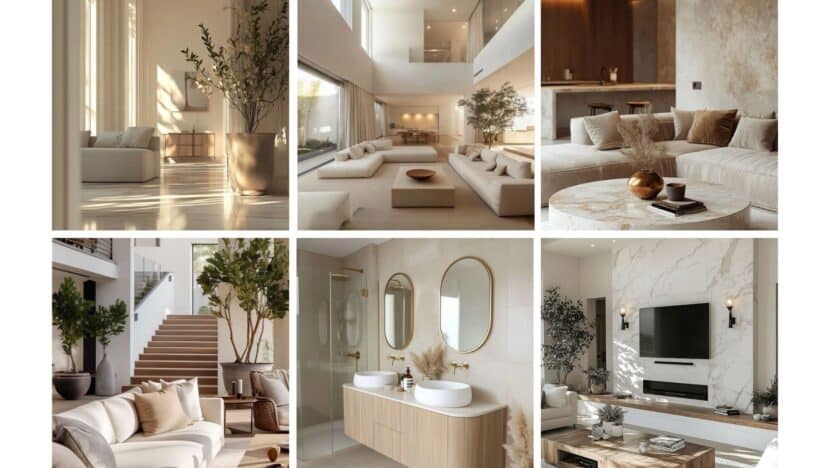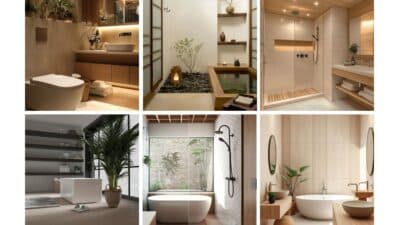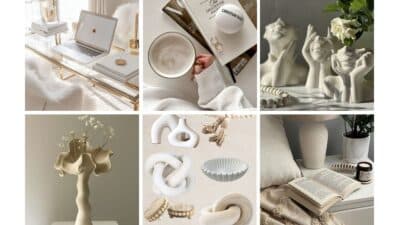Luxury minimalism is about quality over quantity, where every aspect of your home is intentional, elegant, and practical. With luxury minimalism, you create calming spaces that embrace uncluttered design, high-quality materials, and timeless beauty without excess or flash. This approach strips away what isn’t needed, allowing purposeful details and refined finishes to stand out.
If you’re looking for interiors that feel both sophisticated and serene, this style provides a perfect approach. You can achieve a sense of calm, order, and understated elegance, whether you’re rethinking a full home or just updating a few rooms.
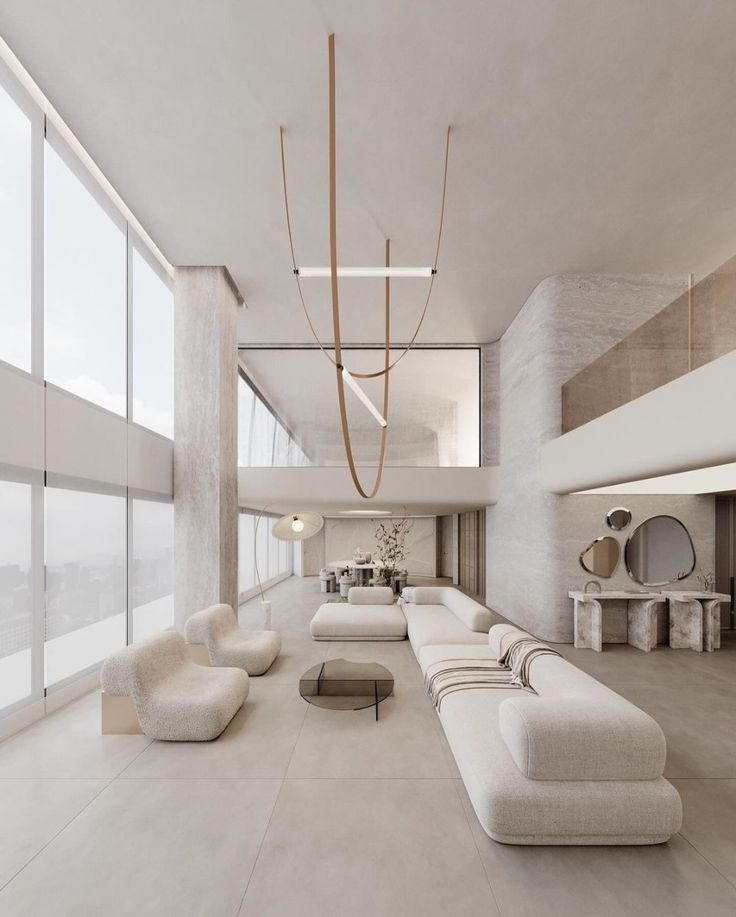
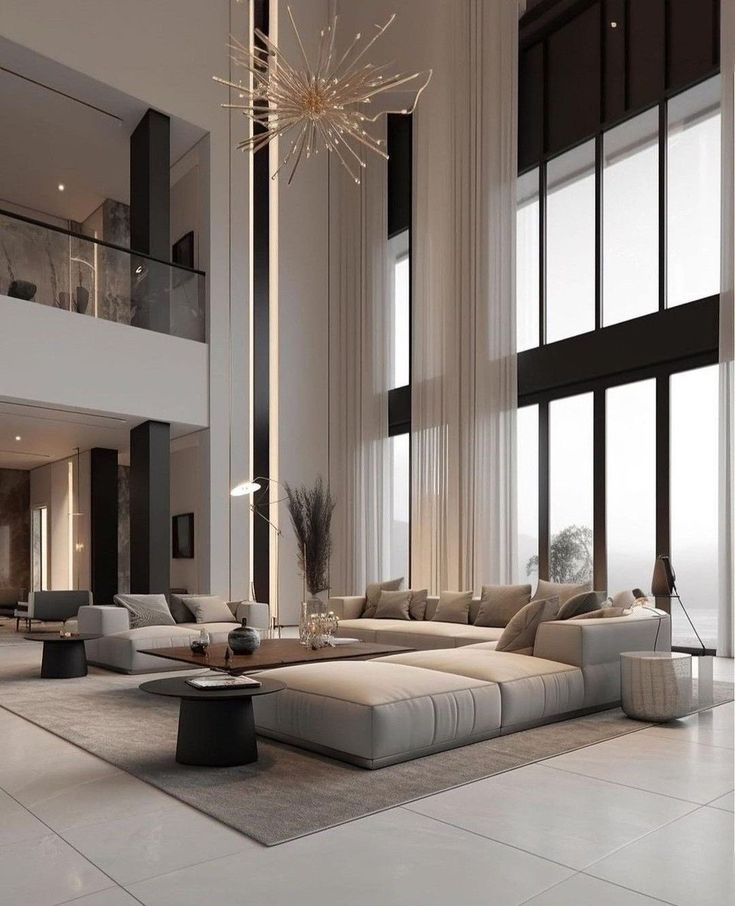
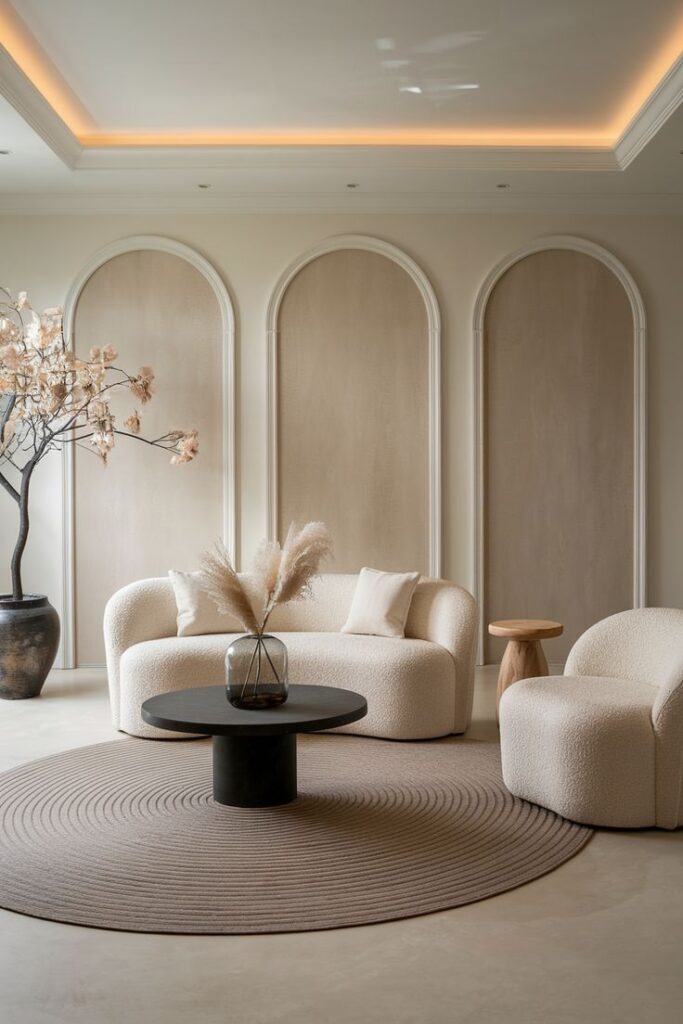
Key Takeaways
- Luxury minimalism balances elegance with purposeful simplicity.
- Carefully selected materials and clear zones define each living area.
- Calm, refined spaces focus on quality, functionality, and sustainability.
Principles of Luxury Minimalism
Luxury minimalism blends a clean, uncluttered approach with premium details and materials. You’ll experience purposeful design where every choice is both practical and refined, offering calm, timeless interiors.
Defining Luxury Minimalist Style
Luxury minimalist interior design is about more than just empty spaces and neutral tones. It’s a carefully curated look that balances restraint with sophistication.
You won’t find flashy decorations or excess ornamentation; instead, rooms rely on a harmonious palette and thoughtfully selected pieces.
In this style, each element is chosen for its lasting value, beauty, and purpose.
You’ll often see natural materials like oak, marble, wool, leather, and linen—each adding subtle texture and richness without cluttering your space.
Furnishings are elegant but understated, with clean lines and gentle curves.
The attitude is timeless rather than trendy. You prioritize authenticity and refinement, never sacrificing comfort or warmth for the sake of minimalism.
Key features include:
- Subdued colors
- Quality finishes
- Uncomplicated layouts
- Carefully considered lighting
Luxury minimalism invites you to enjoy open, airy rooms that feel tranquil and elevated.
The Essence of Simplicity and Functionality
Simplicity and functionality form the backbone of luxury minimalism.
Each room avoids unnecessary visual noise, using open space to guide your eye and create a sense of calm.
Furniture and décor serve clear functions—no crowded surfaces or purely decorative pieces.
This approach encourages you to select what you truly need, so every item has its purpose.
Spaces become easier to maintain, making everyday life feel less stressful.
A “less is more” mindset means editing your possessions down to essentials, then choosing pieces that are both beautiful and useful.
Integrated storage, multi-functional furniture, and uncluttered surfaces reinforce the feeling of order.
Through this intentional simplicity, you gain rooms that are not only stylish but practical for daily living.
Quality Over Quantity Approach
In luxury minimalism, you focus on sourcing fewer but higher-quality items.
You invest in craftsmanship, durability, and timeless design instead of filling every corner.
This approach transforms your interior by making each piece matter.
A single, bespoke table or designer sofa can act as a focal point, elevating the look of a whole room.
Natural materials like solid wood and stone, handwoven textiles, and artisan-made decor add character without excess.
By choosing quality over quantity, you avoid waste and constant replacement.
It’s a sustainable and satisfying way to decorate that aligns with luxury minimalism’s core values.
Not only do your spaces look more refined, but they also feel comfortable and personal, reflecting discerning taste.
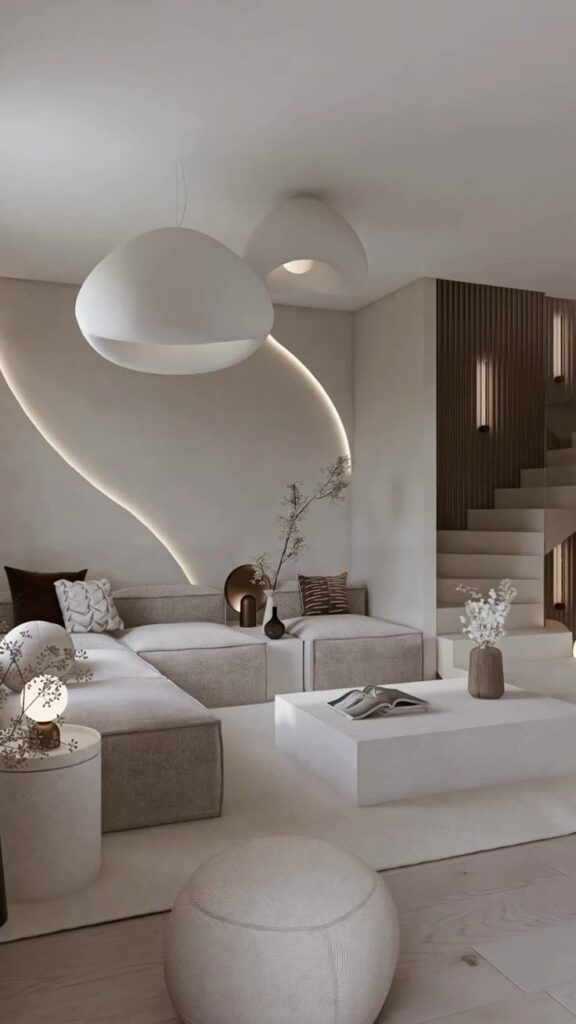
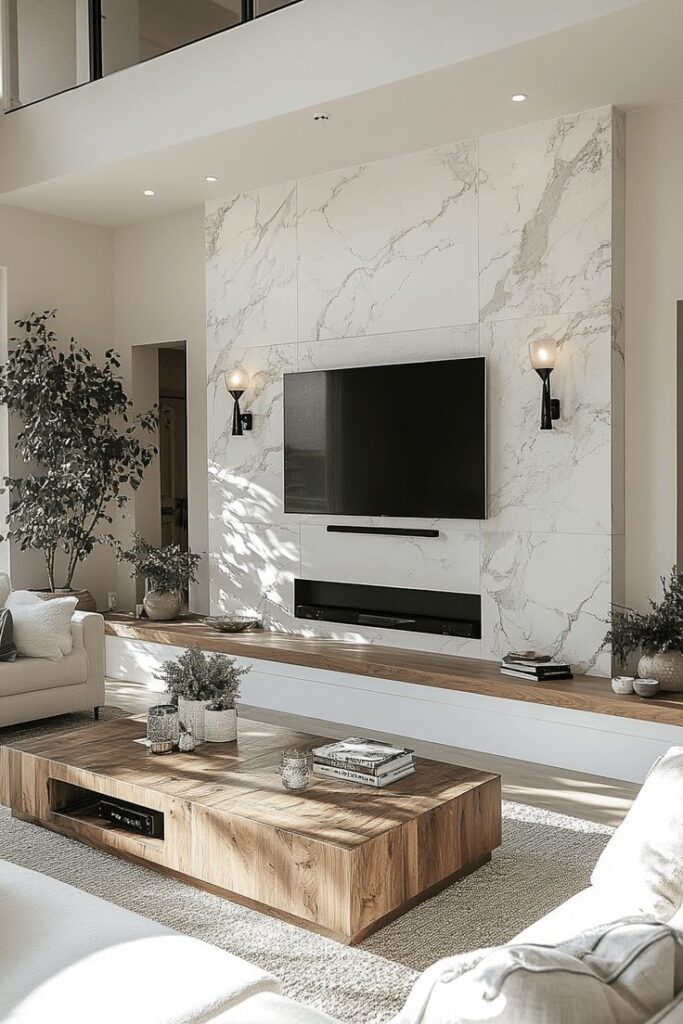
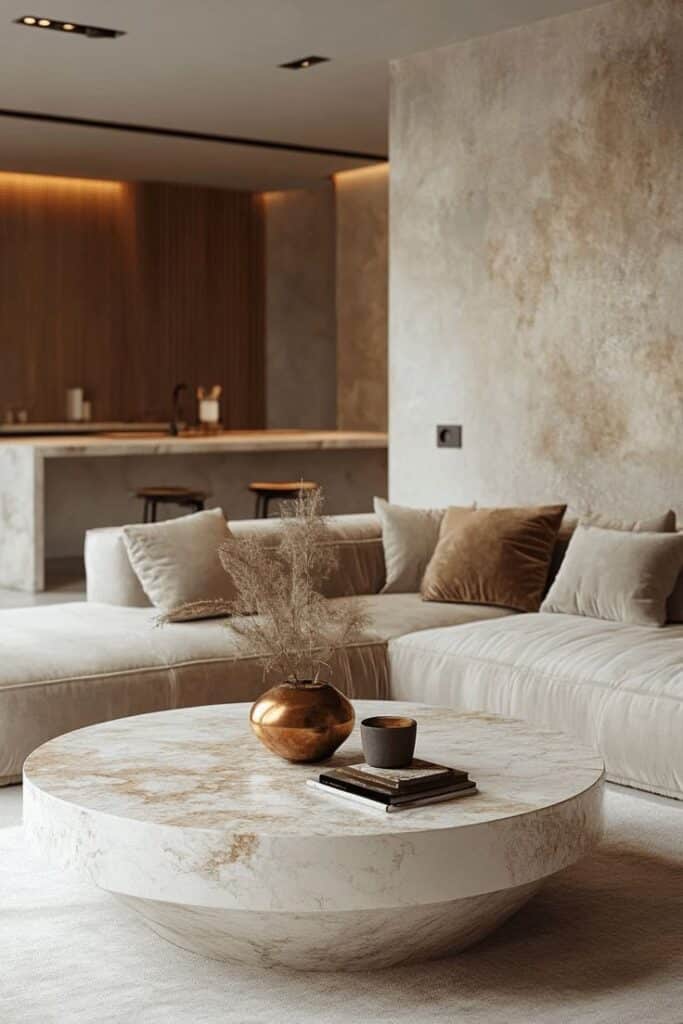
Key Design Elements in Luxury Minimalism
Luxury minimalism blends refined simplicity with quality. This style centers on deliberate choices: careful use of space, restrained color, premium materials, and striking accents.
Clean Lines and Uncluttered Spaces
Creating an interior that feels both luxurious and minimalist starts with clean lines and an uncluttered space. Furniture and decor often feature crisp, straight edges or gentle curves. This allows every piece to feel purposeful rather than decorative.
Avoid excess ornamentation. Limit the number of items on shelves or surfaces; use built-in storage to keep clutter hidden. Negative space—open, blank areas—should feel intentional rather than empty or neglected.
A simple layout with thoughtful placement gives the room a sense of calm. This fosters both elegance and comfort in your daily living environment.
Use of Natural Materials
Materials are central in expressing subtle luxury. Choose elements such as marble, rich hardwoods, stone, leather, and sometimes even carefully selected metals.
These natural materials not only feel high-end but also last longer and age well. A marble countertop, for example, can be both a functional feature and a visual statement. Hardwood flooring and real leather chairs add warmth and tactile interest.
A quick table of typical luxury minimalist materials:
| Material | Use Examples |
|---|---|
| Marble | Countertops, tabletops |
| Leather | Sofas, armchairs |
| Hardwood | Flooring, cabinetry |
| Stone | Accent walls, sinks |
Aim for authenticity over imitation to convey genuine luxury.
Neutral Color Palettes and Natural Light
Emphasize a neutral color palette. Whites, creams, taupe, greys, and muted earth tones set a serene environment and make spaces feel larger. Color rarely takes center stage; instead, it provides harmony and subtlety throughout your home.
Natural light should be maximized. Use sheer curtains or avoid heavy window dressings entirely to let light flow freely. The combination of a bright, sunlit room with pale tones makes the space feel airy, refined, and welcoming.
Minimal contrast reduces visual noise and supports the minimalist principle: every element matters.
Textures and Statement Pieces
Layering textures adds depth so that the minimalist aesthetic does not become sterile. Soft wool throws, velvet cushions, woven baskets, and natural stone create interest while maintaining calm.
Select statement pieces sparingly—like sculptural lighting, a unique piece of furniture, or art. These objects stand out against the neutral background, becoming focal points without overwhelming the room.
Using a single statement lighting fixture or bold accent maintains luxury’s sense of exclusivity, while textured surfaces ensure comfort and richness in everyday use.
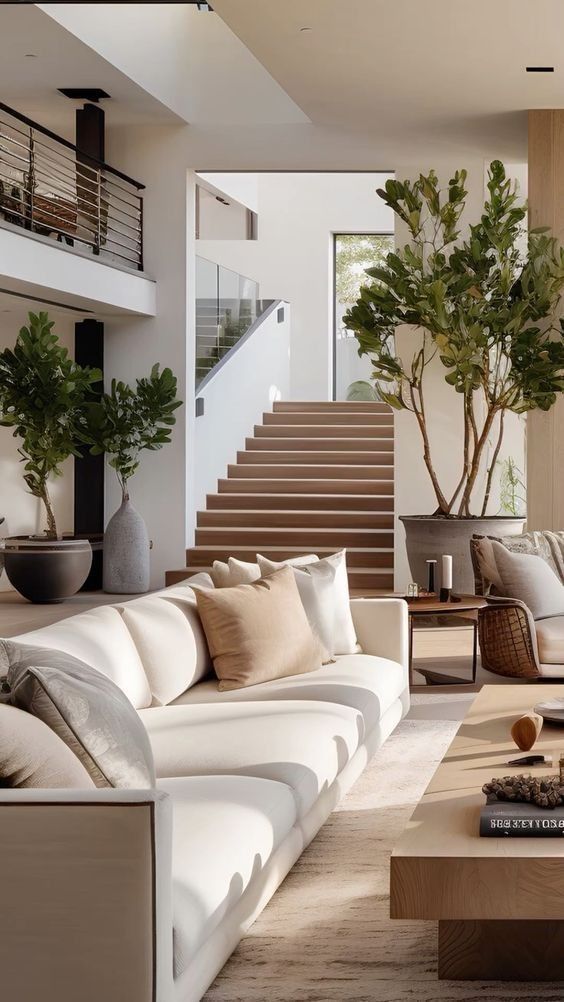
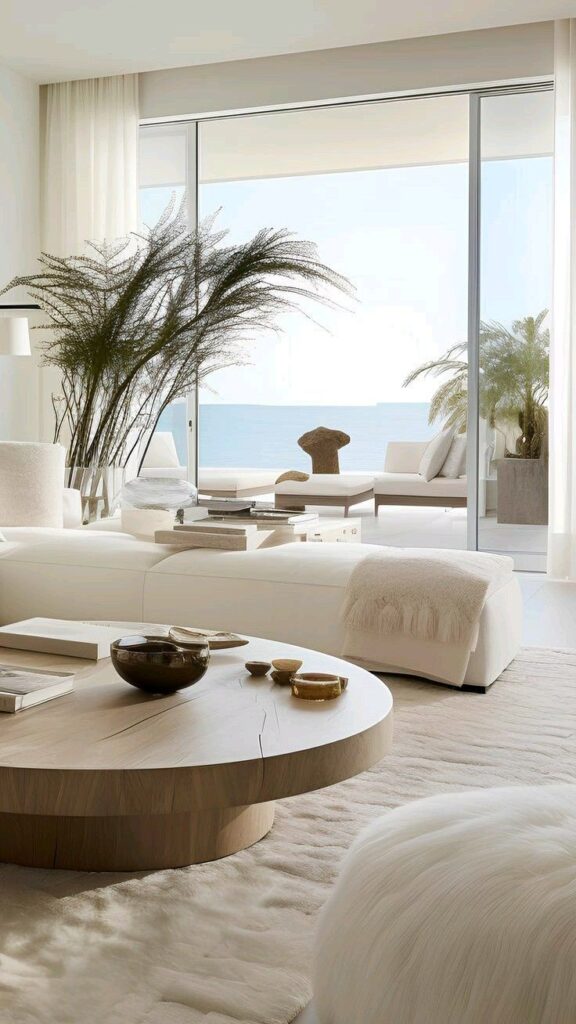
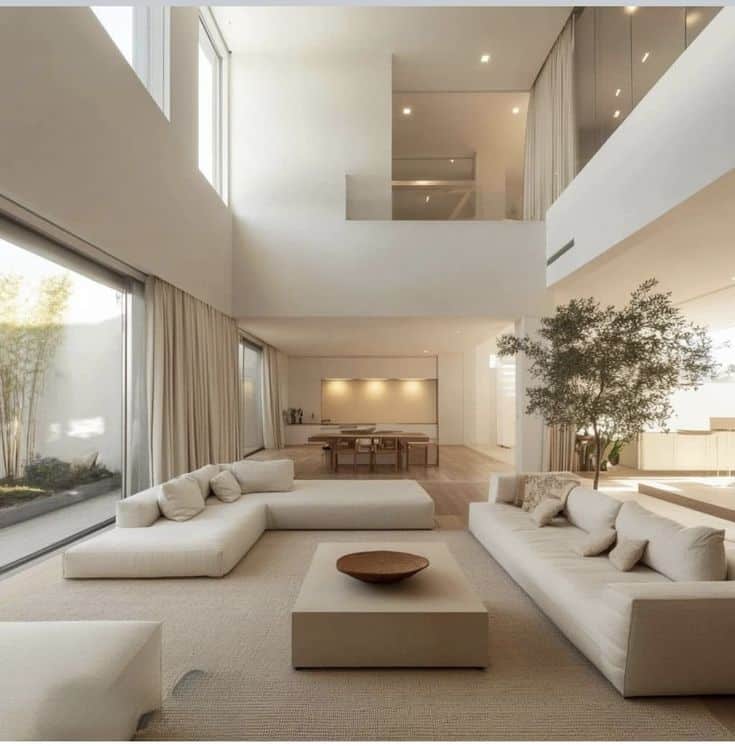
Core Spaces in Luxury Minimalist Interiors
A luxury minimalist interior focuses on calm, serenity, and refinement. Careful selection and thoughtful placement of every element create spaces that feel both sophisticated and understated.
Minimalist Living Room
In a minimalist living room, open space is essential. Arrange furniture to allow for easy movement and a sense of airiness. Opt for a neutral color palette—such as whites, creams, soft grays, and warm beiges—to maintain a peaceful aesthetic.
Choose a few pieces of high-quality, well-designed furniture instead of crowding the room. Look for sofas with clean lines, low-profile coffee tables, and minimal decor. A large piece of understated artwork or a sculptural vase can be a focal point without overwhelming the space.
Lighting is important. Consider floor-to-ceiling windows for natural light or add subtle, modern lighting fixtures to create ambiance. Use storage solutions—like built-in cabinets or hidden shelves—to keep personal items out of view and reinforce the sense of order.
| Element | Description |
|---|---|
| Color Palette | Neutral hues, soft textures |
| Furniture | Minimal, high-quality, functional |
| Lighting | Natural light, simple modern fixtures |
| Decor | Understated accessories, 1-2 statement pieces |
Minimalist Bedroom
The minimalist bedroom is designed to be a sanctuary that encourages deep rest. Stick with essential furnishings only: a low platform bed, simple nightstands, and subtle lighting.
Soft, neutral bedding in natural fabrics helps enhance the sense of calm. Avoid clutter by limiting visible personal items and keeping surfaces clean. Instead of multiple wall decorations, you might select a single refined artwork or minimalist wall lamp.
Maximize serenity by using integrated storage solutions—drawer beds or built-in wardrobes work well. Keep window treatments sheer or plain for a light, tranquil feel. You can add texture with a soft rug or a knitted throw, but keep patterns and colors understated.
Key aspects:
- Clean, uncluttered surfaces
- Focus on comfort and tranquility
- Thoughtfully chosen, functional lighting

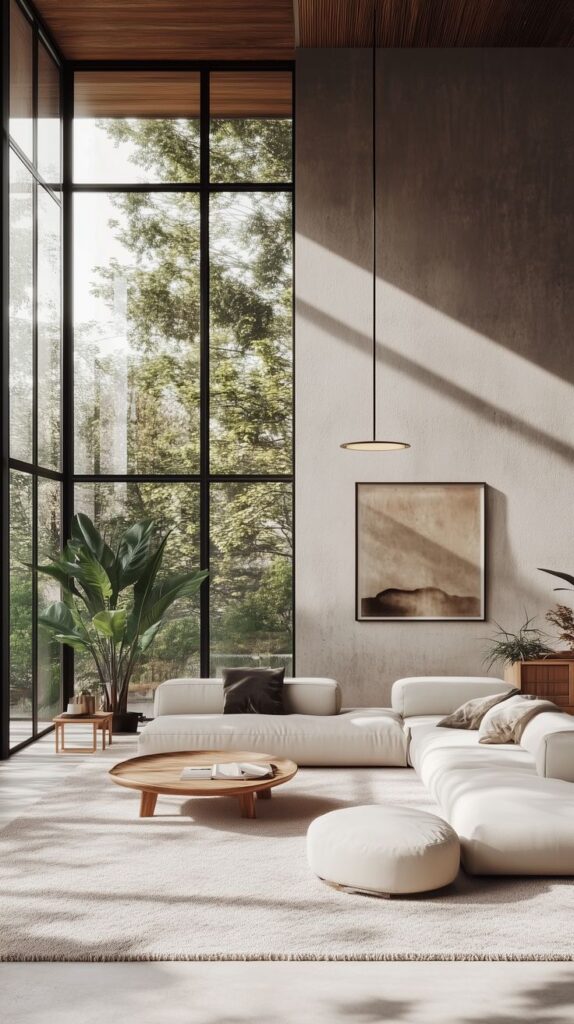
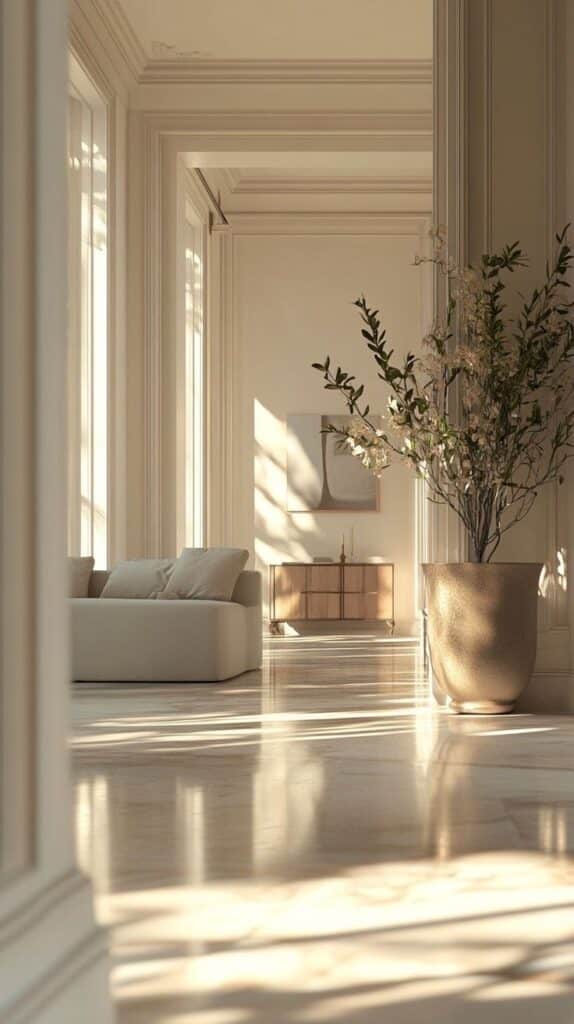
Luxury Minimalist Kitchens and Dining Rooms
Luxury minimalist kitchens and dining rooms combine practical design with sophisticated, inviting elegance. Clean lines, refined materials, and careful attention to detail define these spaces and foster a welcoming yet uncluttered atmosphere.
Minimalist Kitchen Design
A minimalist kitchen prioritizes ample storage, streamlined cabinetry, and surfaces free from excess items. Your choice of materials, such as marble or brass accents, can offer subtle touches of luxury without overwhelming the space.
Neutral color palettes such as soft grays and whites help maintain a sense of calm and openness. Integrated appliances hide clutter and maximize countertop space, while under-cabinet lighting can create a gentle, sophisticated glow.
Key design elements for a practical and elegant minimalist kitchen:
- Flat-panel cabinets
- Handleless drawers
- Hidden storage solutions
- Sleek, durable worktops
The focus remains on functionality, making it easy to cook, clean, and entertain while maintaining a visually tidy environment.
Minimalist Dining Room Concepts
A minimalist dining room leans into simplicity and understated sophistication. Choosing a single statement dining table, perhaps in natural wood or stone, sets the stage for a serene setting.
Seating should be comfortable yet streamlined, with chairs in neutral fabrics or finishes. You might add subtle texture with a low-profile rug or minimalistic pendant lighting to enhance the space without excess decoration.
Keep the dining area clutter-free by using built-in shelving or discreet storage cabinets. A carefully selected piece of artwork or a vase with fresh greenery adds character and elegance without disrupting the room’s minimalism.
Essentials of a minimalist dining room:
- Neutral tones for warmth
- Quality materials
- Limited, intentional decor
- Uncluttered surfaces
These choices foster a sophisticated atmosphere while ensuring dining remains both practical and inviting.
Creating a Calm and Elegant Atmosphere
A luxury minimalism interior relies on visual clarity, balanced use of light, and distinct yet restrained details. Achieving calm and elegance means choosing every feature to support a sense of openness and timeless sophistication.
Incorporating Statement Lighting
Statement lighting, such as a sculptural chandelier or a minimal pendant, provides both focus and atmosphere. The right fixture acts as a subtle centerpiece, adding elegance without overpowering the room.
Soft, warm light enhances tranquility and prevents harsh shadows. Place lighting above focal areas like dining tables or seating groups for a polished look.
Opt for fixtures in brass, matte black, or glass for understated luxury. Layer lighting with recessed lights or accent lamps to maintain an uncluttered space. Avoid overly ornate designs; simplicity is key to preserving calm.
Large windows help natural light travel through the space during the day, supporting an airy, open feel. Pair minimal window treatments with your lighting choices to keep the overall look seamless.
Utilizing Abstract Art and Architectural Features
Abstract art is effective for adding personality without overwhelming the space. Look for muted or neutral-toned pieces that blend gently with your color palette.
One or two sizable works have more impact than multiple small ones. Place art on uncluttered walls to let each piece speak for itself.
Architectural features—such as open floor plans, clean-lined shelving, or modern archways—create subtle interest. You can use built-in storage to keep surfaces tidy, further supporting a sense of calm.
Highlight lines and forms rather than adding decorative clutter. Architectural details and abstract art together establish a refined atmosphere that feels purposeful and serene.
Sustainability and Modern Minimalist Luxury
Luxury minimalism places a strong emphasis on mindful choices, creating interiors that are both beautiful and responsible. By incorporating sustainability and prioritizing quality over quantity, you can achieve a home that supports both aesthetic and environmental goals.
Sustainable Materials and Practices
Choosing eco-friendly materials is at the core of sustainable luxury minimalism. Look for options like FSC-certified wood, natural stone, recycled glass, and organic fabrics. These materials not only reduce your ecological footprint but also bring a sense of authenticity and warmth to your minimalist decor.
Prioritize furniture and finishes that have been produced using low-impact manufacturing and fair labor practices. For example, minimalist furniture made from bamboo, reclaimed wood, or recycled metals delivers style and sustainability in equal measure.
Adding energy-efficient lighting, low-VOC paints, and thoughtfully-placed indoor plants helps to create a healthy and harmonious home environment. These practical choices allow your space to reflect both a commitment to the planet and minimalist style values.
| Material | Sustainable Benefit |
|---|---|
| FSC-certified wood | Responsibly sourced, durable |
| Recycled metals | Reduces waste, long-lasting |
| Organic fabrics | Biodegradable, non-toxic |
Long-Term Value of High-Quality Materials
Investing in high-quality materials creates lasting value for your home. Pieces crafted from solid wood, top-grade leather, or brushed metal often outlast mass-produced alternatives and maintain their appeal over time.
Minimalist furniture made with quality craftsmanship resists trends and daily wear. You avoid frequent replacements, which not only saves money but also reduces waste in the long run.
Focusing on timeless, well-made items allows your interiors to age gracefully. You create an enduring and refined atmosphere that matches both a minimalist and sustainable lifestyle. By choosing quality over quantity, your living space remains uncluttered while reflecting your personal taste and values.


